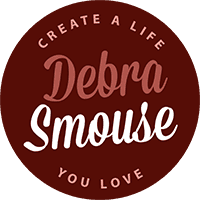You’ve probably heard the buzz (likely from me) about journaling—everyone raves about it, productivity experts recommend it, and therapists suggest it. But here’s the catch: when you’re already juggling work, family, and the general chaos of daily life, the thought of “adding journaling” might feel like just another impossible task.
It’s one of my go-to tools for myself as well as something I recommend to clients. Yes, I know it’s easy to think that journaling is only for people with loads of free time, or for those who enjoy endless navel-gazing. But let me reassure you: journaling isn’t just for teenagers with lock-and-key diaries or people living on yoga retreats.
Here’s the truth—journaling doesn’t have to be a big, time-consuming project. You don’t need to write pages every night or craft something worthy of publishing. Journaling is simply a tool: a pause button you give yourself in the middle of your busy life. Think of it as a low-pressure conversation with yourself on paper—no rules, no grades, no right or wrong way to do it.
If you’ve ever thought, “I’d love to start a journal, but I don’t even know where to begin,” this quick-start guide will show you exactly how to start a journal in a way that feels doable, useful, and even enjoyable.
Step 1: Choose the Right Journal for You
There’s no one “perfect” journal. Some people love a sleek Moleskine. Others are happy with a $2 spiral notebook from Target. And yes, you can even use the Notes app on your phone. (I’m personally in love with the hardback Leuchtturm1917 ones!)
Ask yourself:
-
- Do you like the feel of pen on paper? Go old-school.
- Do you live on your phone anyway? Try a journaling app.
- Do you want prompts included? Look for guided journals.
Journal tip for sticking to it: Pick a journal you actually enjoy opening. If you hate how it looks or feels, you won’t stick with it. Even something small, like your favorite pen, can make the practice more inviting.
Step 2: Set Aside Bite-Sized Time
Here’s the secret: you don’t need an hour of quiet solitude (though that sounds dreamy). Start with five minutes a day —enough to jot down a thought or two without feeling pressured.
Options that work for busy people:
-
- First thing in the morning, before you scroll your phone.
- Right after lunch, instead of doomscrolling.
- Before bed, as a brain dump to sleep better.
Think of journaling as a micro-break for your brain. It’s not about how long you write—it’s about showing up consistently. Over time, those five minutes add up.
Step 3: Ditch the Perfectionism
One of the biggest obstacles for journaling beginners? Thinking your entries have to be “deep” or Instagram-worthy. Nope. This is your space, your words, your messy handwriting.
Write bullet points. Doodle. Scribble down one sentence that says, “I’m tired, but I showed up.” That counts.
Journal tip for sticking to it: Consistency beats brilliance. A messy page is better than a blank one. Remember: you’re writing for yourself, not anyone else.
Step 4: Try Simple Journaling Prompts
Staring at a blank page is intimidating. Prompts give you a place to start and take away the “what do I write about?” stress.
Here are some ideas to get you rolling:
-
- What’s one small win I had today?
- What’s worrying me right now—and is it in my control?
- What am I grateful for in this exact moment?
You don’t need to answer all three—just pick one and write a sentence or two.
Want more? I’ve got a library of journal prompts you can dip into anytime! Plus, I share fresh prompts in every newsletter.
Step 5: Make It Yours
Your journal doesn’t need to follow anyone else’s rules. Want to combine your to-do list with reflections? Go for it. Want to add photos, quotes, or little scraps from your day? Perfect.
Some people even color-code, use stickers, or sketch in the margins. Others keep it minimalist and just write. Neither is “better”—the more your journal reflects you, the more you’ll look forward to using it.
Extra Credit: Track What Matters to You
Once you’ve got the hang of jotting things down, you can use your journal for more than just thoughts. A few ideas:
-
- Mood tracker: Notice patterns in your energy or emotions.
- Habit tracker: Check off daily goals like water intake, walks, or meditation.
- Goal progress: Keep a running log of small wins toward something bigger.
Think of this as optional—only add it if it makes journaling feel more useful (not more complicated).
Journaling as a Busy Person’s Secret Weapon
Journaling isn’t about perfection or extra time—it’s about giving yourself a daily moment of clarity and care. Even a few sentences can shift your mindset, spark new insights, and remind you that you’re more in control than you think.
There’s no need to wait for the perfect moment—the best time to start a journal is now. One word, one thought, one page at a time can grow into a practice that supports you in ways you can’t yet imagine.
Because here’s the beautiful truth: your story is worth telling, your voice is worth hearing, and every page you fill is a step toward a stronger, calmer, more connected you.
The perfect moment is now. Pick up the pen and begin.
Start your journaling journey today—and don’t do it alone.
Join my newsletter for simple strategies, prompts, and encouragement every quarter.
>>Read more articles that provide tools for busy lives<<









